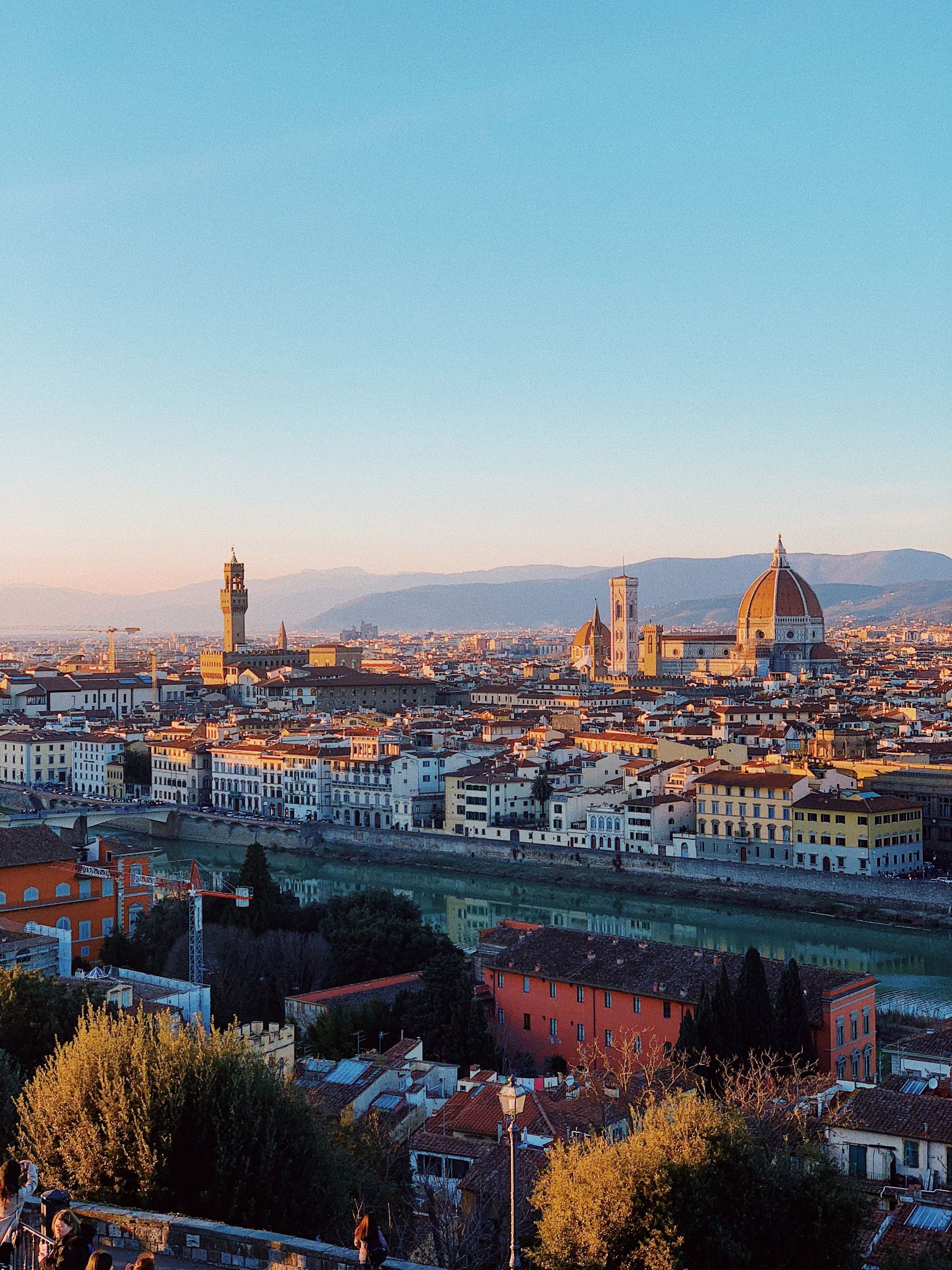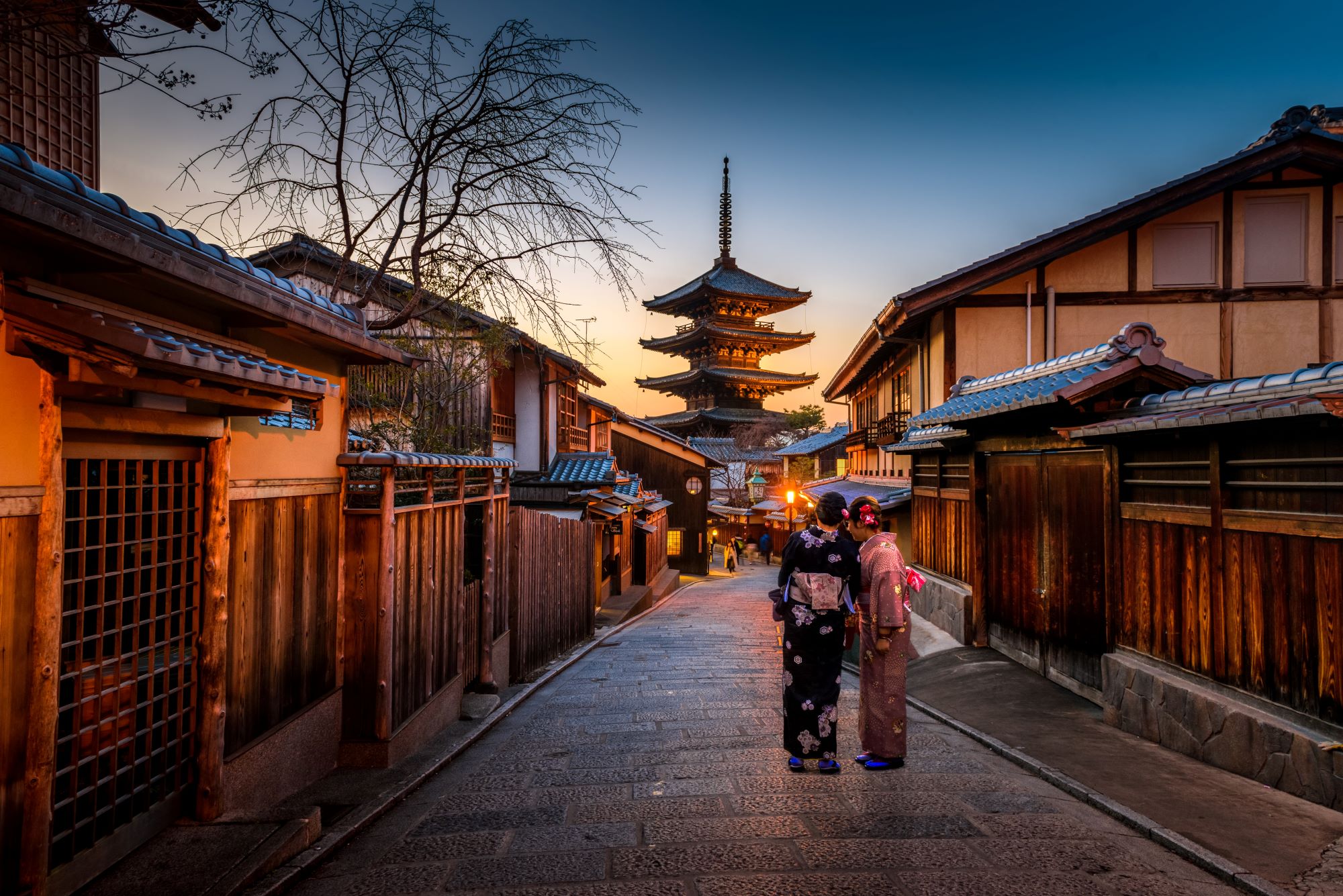
Yasaka Shrine or Yasaka Jinja, also known as Gion Shrine, is one of the most popular shrines in Kyoto. Located between the Gion district and Higashiyama, it was built over 1350 years ago and it combines the inner sanctuary (honden) and the offering hall (haiden) in a single building. The lanterns in front of the dance stage get lit every evening and bear the names of local sponsors.
This shrine is very well known for the Gion Matsuri, a Summer festival celebrated in July, probably the most famous festival in Japan.
Yasaka Shrine is also crowded during the cherry blossom in early April, due to its proximity to the Maruyama Park, one of the best spots to admire cherry blossoms in Kyoto.
[/vc_column_text]
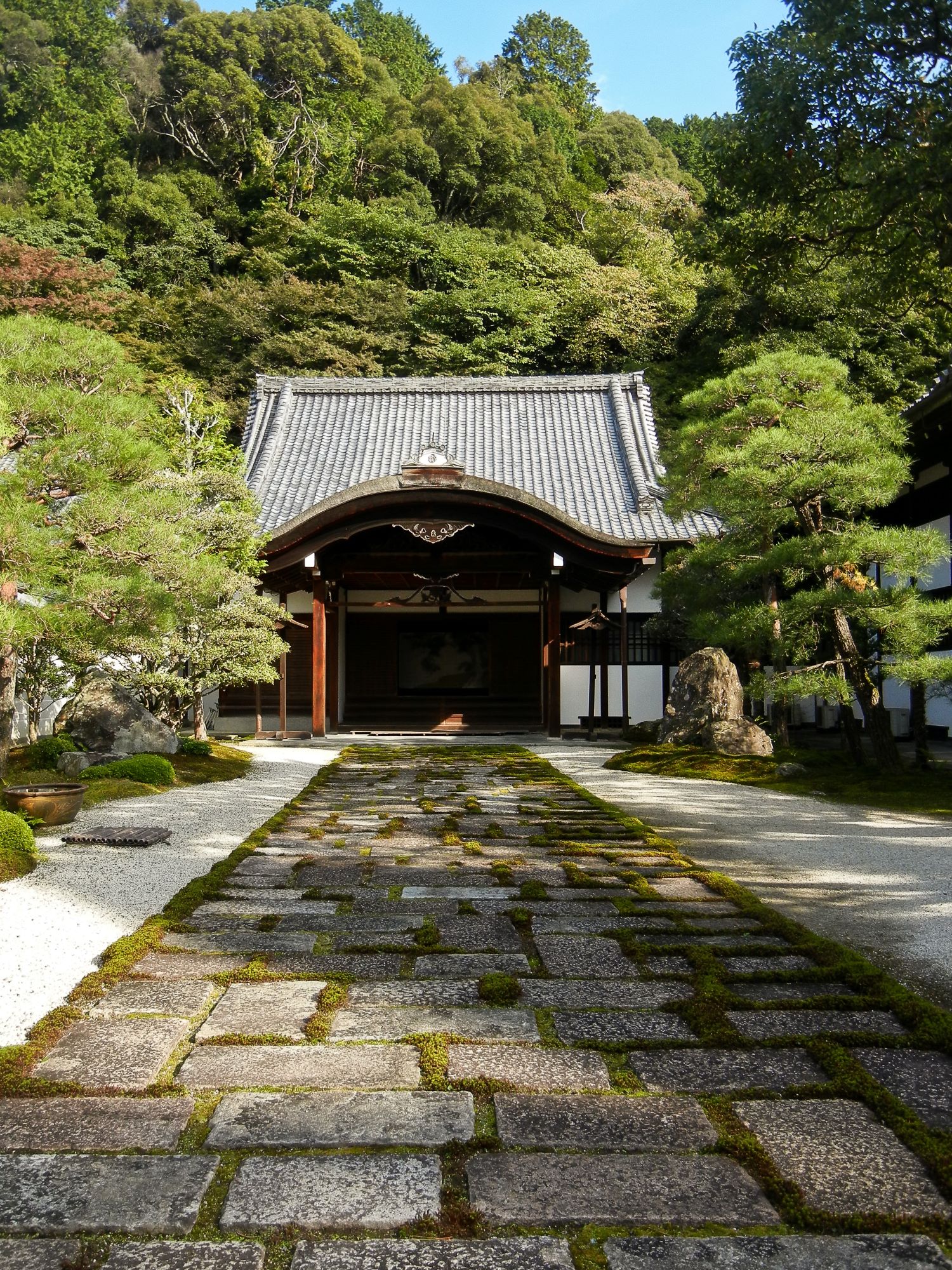
10) Nanzen-ji
Located next to Kyoto’s forested Higashiyama mountains, this large Zen temple is one of the most famous in Japan and it includes multiple sub-temples. In the 13th century, the Emperor Kameyama built his retirement mansion at the temple’s present location and then converted it into a Zen temple.
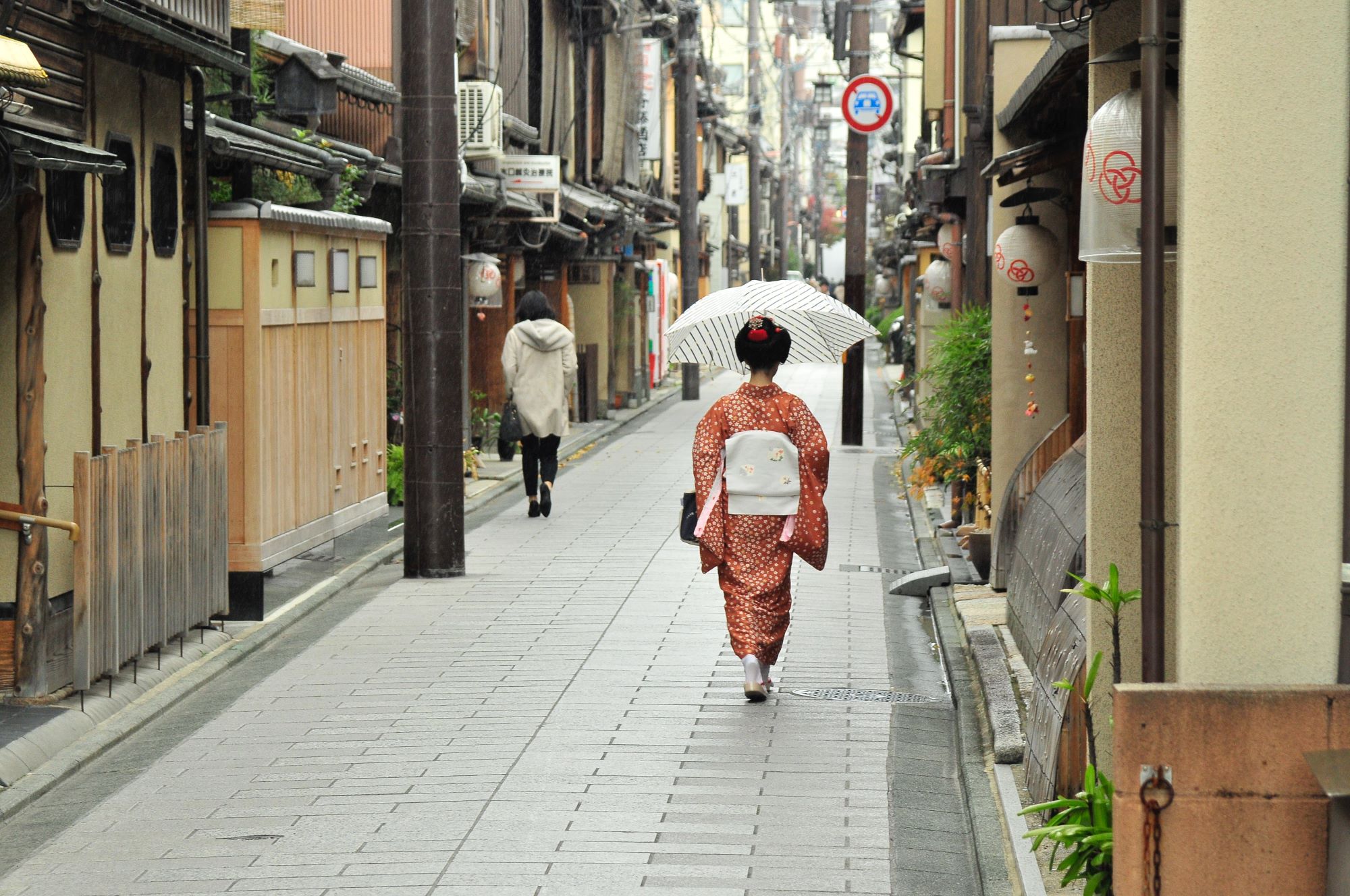
11) Geishas in the Gion District
Famous as an entertainment and geisha district, Gion is an area of Kyoto that is well suited to explore on foot. Located on the eastern bank of the Kamogawa River, Gion is an eclectic mix of modern architecture and historical beauty that provides a unique taste of numerous Japanese traditions, from the elaborately dressed geishas to well-preserved 17th-century restaurants and teahouses offering a glimpse of old Japan.
Centered on an area encompassing Hanami-Koji Street, Shijo-dori Street, and the waterside promenades of Shirakawa Minami-dori Street, Gion is also famous for its many fine temples. The best-known of these are the 15th-century Silver Pavilion (Ginkakuji) and the Chion-in Temple.
Chion-in is one of Japan’s most famous temples, notable for its 24-meter-high, two-story tower (Sammon-san), which houses the country’s largest bell. Weighing 71 tons, it was cast in 1633, and is rung only during festivals in mid-April. Gion is a wonderful (and safe) place to enjoy a walking tour at night, too.

12) Wagyu, sushi, okonomiyaki
If you are a meat lover, don’t miss the incredible – although expensive – Kobe beef. Also try the traditional Japanese teppanyaki savory pancakes called Okonomiyaki.
Restaurants we recommend for an awesome Japanese cuisine tasting: Naritaya for incredible sushi.
Michelin-starred Mizuki for very high quality food, steaks, sushi. If you want to indulge, try the exquisite Wagyu steaks.

The original Kyoto Imperial Palace (Kyoto-gosho), built in AD 794 and replaced several times after being destroyed by fire, remains one of the city’s most visited historic sites. Although the present building was constructed in 1855, it still impresses.
Occupying a large (once-walled) enclosure near the heart of the city, highlights include its finely decorated gates and important rooms and buildings. These include the Hall for State Ceremonies (Shishinden), the Emperor’s Residence (Seiryo-den), the Courtroom (Ko-gosho), and the Imperial Library.
While the lovely grounds of this Kyoto landmark are open to the public, the palace itself can only be visited as part of a guided tour operated by the Imperial Household Agency. Be sure to plan ahead and check their website for reservations and application forms.
[/vc_column_text]
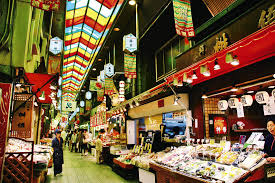
8) Nishiki Market
Perfect place to explore Kyoto’s food culture. Very crowded during lunchtime (it is better to visit it in the morning or right before closing, around 5 P.M.), this narrow shopping street offers all the traditional ingredients for Japanese cooking and a nice array of food samples and snacks.
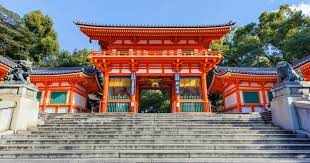
9) Yasaka Shrine & cherry blossoms
Yasaka Shrine or Yasaka Jinja, also known as Gion Shrine, is one of the most popular shrines in Kyoto. Located between the Gion district and Higashiyama, it was built over 1350 years ago and it combines the inner sanctuary (honden) and the offering hall (haiden) in a single building. The lanterns in front of the dance stage get lit every evening and bear the names of local sponsors.
This shrine is very well known for the Gion Matsuri, a Summer festival celebrated in July, probably the most famous festival in Japan.
Yasaka Shrine is also crowded during the cherry blossom in early April, due to its proximity to the Maruyama Park, one of the best spots to admire cherry blossoms in Kyoto.

10) Nanzen-ji
Located next to Kyoto’s forested Higashiyama mountains, this large Zen temple is one of the most famous in Japan and it includes multiple sub-temples. In the 13th century, the Emperor Kameyama built his retirement mansion at the temple’s present location and then converted it into a Zen temple.

11) Geishas in the Gion District
Famous as an entertainment and geisha district, Gion is an area of Kyoto that is well suited to explore on foot. Located on the eastern bank of the Kamogawa River, Gion is an eclectic mix of modern architecture and historical beauty that provides a unique taste of numerous Japanese traditions, from the elaborately dressed geishas to well-preserved 17th-century restaurants and teahouses offering a glimpse of old Japan.
Centered on an area encompassing Hanami-Koji Street, Shijo-dori Street, and the waterside promenades of Shirakawa Minami-dori Street, Gion is also famous for its many fine temples. The best-known of these are the 15th-century Silver Pavilion (Ginkakuji) and the Chion-in Temple.
Chion-in is one of Japan’s most famous temples, notable for its 24-meter-high, two-story tower (Sammon-san), which houses the country’s largest bell. Weighing 71 tons, it was cast in 1633, and is rung only during festivals in mid-April. Gion is a wonderful (and safe) place to enjoy a walking tour at night, too.

12) Wagyu, sushi, okonomiyaki
If you are a meat lover, don’t miss the incredible – although expensive – Kobe beef. Also try the traditional Japanese teppanyaki savory pancakes called Okonomiyaki.
Restaurants we recommend for an awesome Japanese cuisine tasting: Naritaya for incredible sushi.
Michelin-starred Mizuki for very high quality food, steaks, sushi. If you want to indulge, try the exquisite Wagyu steaks.

Also known as Ginkaku-ji or Temple of the Silver Pavillion. You can reach this temple, which is one of the most popular in town, by walking the Philosopher’s Path. Although it was never covered in silver leaf, it is a beautiful temple reflected in a pond with amazing gardens, including a moss garden and a white sand Zen garden.
[/vc_column_text]
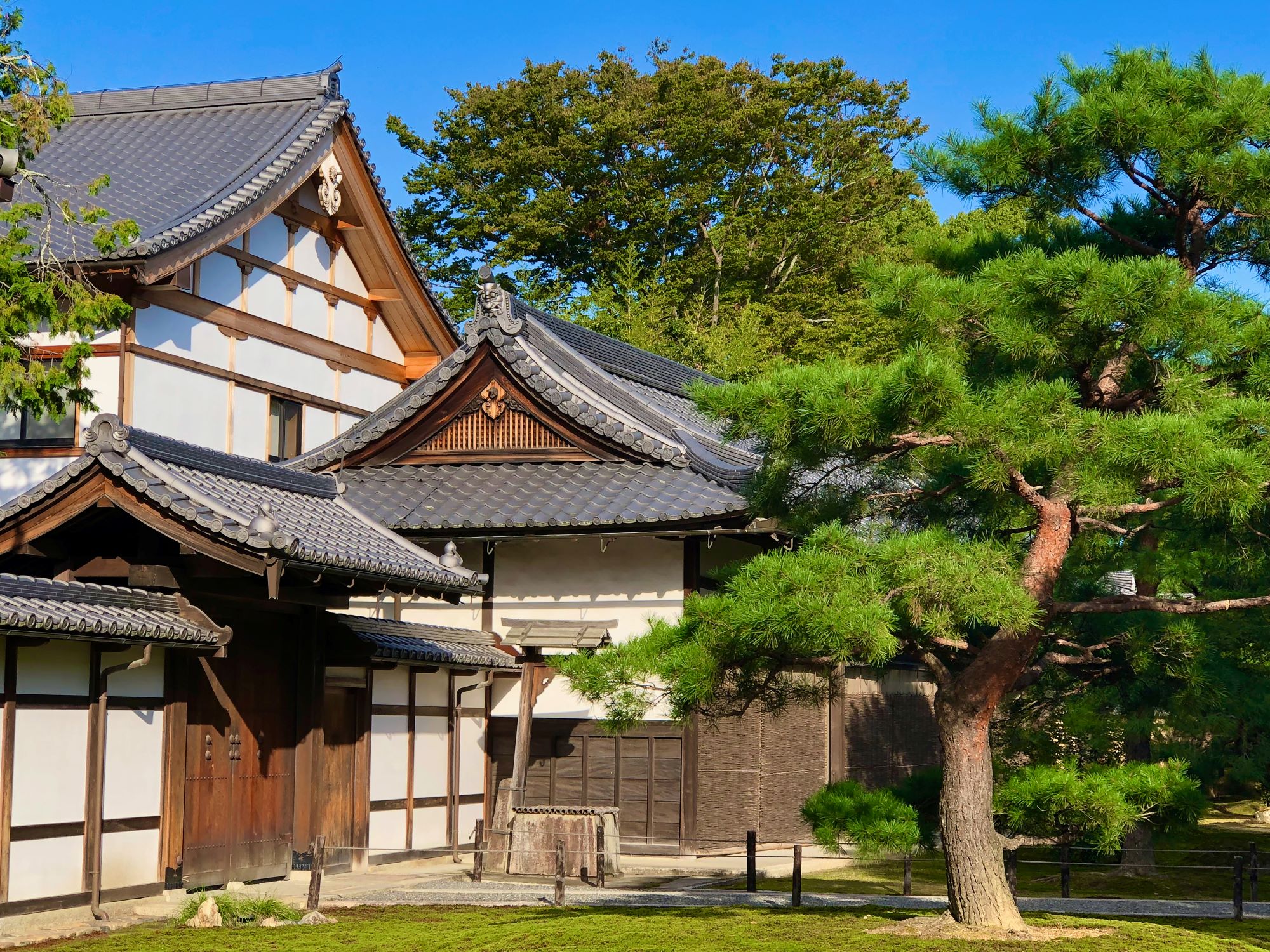
7) Kyoto Imperial Palace
The original Kyoto Imperial Palace (Kyoto-gosho), built in AD 794 and replaced several times after being destroyed by fire, remains one of the city’s most visited historic sites. Although the present building was constructed in 1855, it still impresses.
Occupying a large (once-walled) enclosure near the heart of the city, highlights include its finely decorated gates and important rooms and buildings. These include the Hall for State Ceremonies (Shishinden), the Emperor’s Residence (Seiryo-den), the Courtroom (Ko-gosho), and the Imperial Library.
While the lovely grounds of this Kyoto landmark are open to the public, the palace itself can only be visited as part of a guided tour operated by the Imperial Household Agency. Be sure to plan ahead and check their website for reservations and application forms.

8) Nishiki Market
Perfect place to explore Kyoto’s food culture. Very crowded during lunchtime (it is better to visit it in the morning or right before closing, around 5 P.M.), this narrow shopping street offers all the traditional ingredients for Japanese cooking and a nice array of food samples and snacks.

9) Yasaka Shrine & cherry blossoms
Yasaka Shrine or Yasaka Jinja, also known as Gion Shrine, is one of the most popular shrines in Kyoto. Located between the Gion district and Higashiyama, it was built over 1350 years ago and it combines the inner sanctuary (honden) and the offering hall (haiden) in a single building. The lanterns in front of the dance stage get lit every evening and bear the names of local sponsors.
This shrine is very well known for the Gion Matsuri, a Summer festival celebrated in July, probably the most famous festival in Japan.
Yasaka Shrine is also crowded during the cherry blossom in early April, due to its proximity to the Maruyama Park, one of the best spots to admire cherry blossoms in Kyoto.

10) Nanzen-ji
Located next to Kyoto’s forested Higashiyama mountains, this large Zen temple is one of the most famous in Japan and it includes multiple sub-temples. In the 13th century, the Emperor Kameyama built his retirement mansion at the temple’s present location and then converted it into a Zen temple.

11) Geishas in the Gion District
Famous as an entertainment and geisha district, Gion is an area of Kyoto that is well suited to explore on foot. Located on the eastern bank of the Kamogawa River, Gion is an eclectic mix of modern architecture and historical beauty that provides a unique taste of numerous Japanese traditions, from the elaborately dressed geishas to well-preserved 17th-century restaurants and teahouses offering a glimpse of old Japan.
Centered on an area encompassing Hanami-Koji Street, Shijo-dori Street, and the waterside promenades of Shirakawa Minami-dori Street, Gion is also famous for its many fine temples. The best-known of these are the 15th-century Silver Pavilion (Ginkakuji) and the Chion-in Temple.
Chion-in is one of Japan’s most famous temples, notable for its 24-meter-high, two-story tower (Sammon-san), which houses the country’s largest bell. Weighing 71 tons, it was cast in 1633, and is rung only during festivals in mid-April. Gion is a wonderful (and safe) place to enjoy a walking tour at night, too.

12) Wagyu, sushi, okonomiyaki
If you are a meat lover, don’t miss the incredible – although expensive – Kobe beef. Also try the traditional Japanese teppanyaki savory pancakes called Okonomiyaki.
Restaurants we recommend for an awesome Japanese cuisine tasting: Naritaya for incredible sushi.
Michelin-starred Mizuki for very high quality food, steaks, sushi. If you want to indulge, try the exquisite Wagyu steaks.

Built over a large pond in the 14th century as a retirement mansion for Shogun (military ruler) Ashikaga Yoshimitsu (but rebuilt in its original form more than once), it is now a Zen Buddhist temple. The Golden Pavillion is one of the most popular attractions in town and it takes its name from the gold leaf decorating the top two floors of the building. The gold leaf is said to fight the negativity associated with death. Visit the traditional Sekkatei teahouse.
[/vc_column_text]
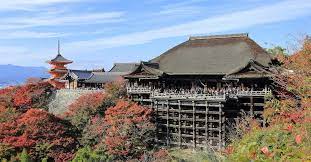
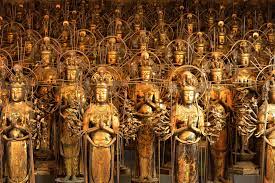
5) Kiyomizu-dera
A UNESCO World Heritage site in Eastern Kyoto, the Kiyomizu-dera Temple overlooks the city from the Otowa Mountain. Built in 790 A. D., this picturesque temple is dedicated to the 11-headed Buddhist goddess of Mercy.
Try to visit this place before 8 A.M. to beat the crowds. Walk along the Tea-pot lane and visit its small craft stores. Don’t miss the large terrace of the Main Hall to enjoy amazing views of the city, especially during Fall foliage season. Built on 30-meter-high (98 feet) pillars, the terrace is used for ceremonies and dances.
Also visit: Rengeo-in Sanjusangendo
The Buddist temple Sanjusangendo is part of the Rengeo-in monastery and it is known for its big dimensions and its 1001 golden Buddha statues (plus 28 guardian statues). Listed as a National Treasure of Japan, its official name is Rengeo-in temple, meaning ‘Temple of the Lotus King Kannon-bosatsu’.
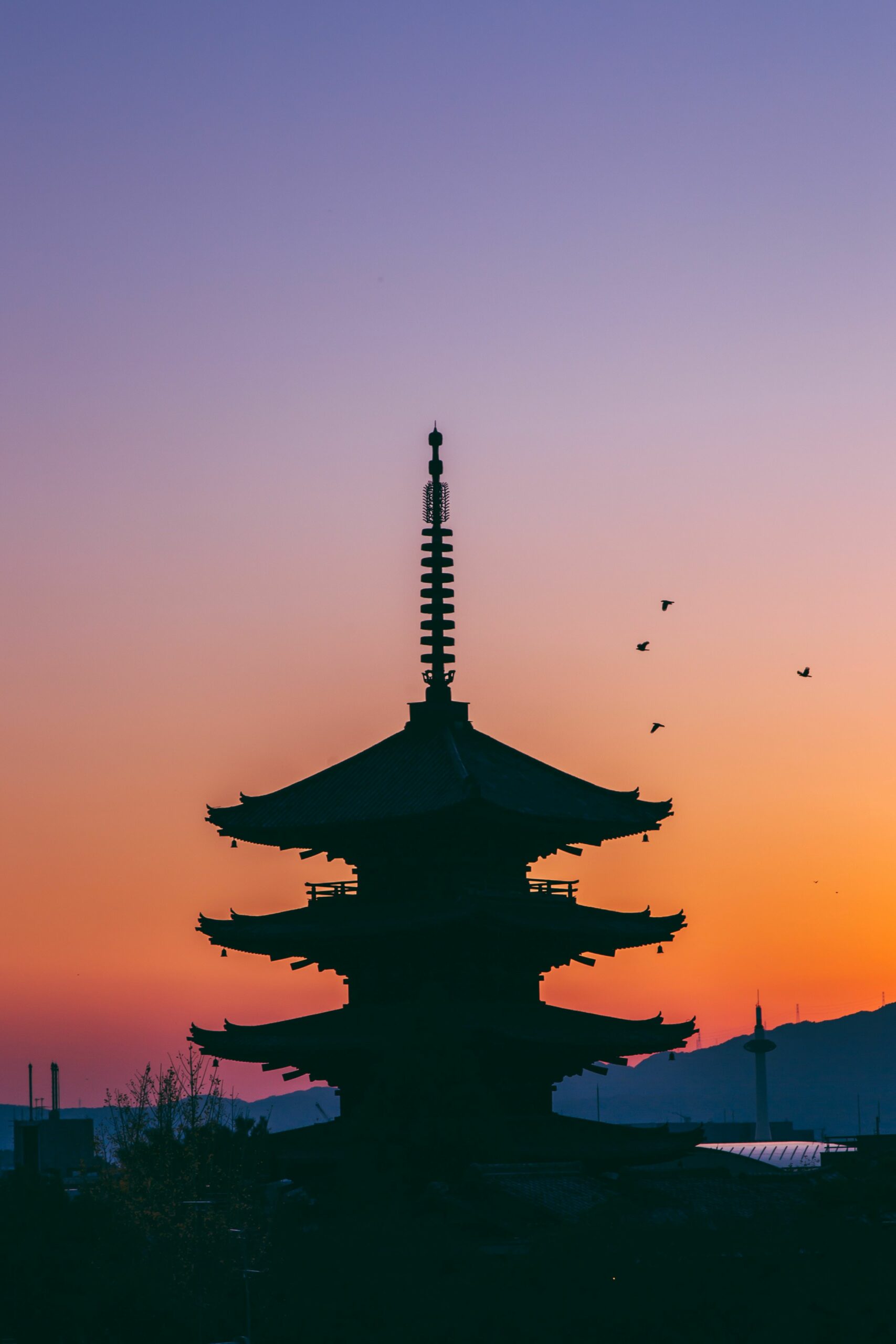
6) Higashiyama Jisho-ji
Also known as Ginkaku-ji or Temple of the Silver Pavillion. You can reach this temple, which is one of the most popular in town, by walking the Philosopher’s Path. Although it was never covered in silver leaf, it is a beautiful temple reflected in a pond with amazing gardens, including a moss garden and a white sand Zen garden.

7) Kyoto Imperial Palace
The original Kyoto Imperial Palace (Kyoto-gosho), built in AD 794 and replaced several times after being destroyed by fire, remains one of the city’s most visited historic sites. Although the present building was constructed in 1855, it still impresses.
Occupying a large (once-walled) enclosure near the heart of the city, highlights include its finely decorated gates and important rooms and buildings. These include the Hall for State Ceremonies (Shishinden), the Emperor’s Residence (Seiryo-den), the Courtroom (Ko-gosho), and the Imperial Library.
While the lovely grounds of this Kyoto landmark are open to the public, the palace itself can only be visited as part of a guided tour operated by the Imperial Household Agency. Be sure to plan ahead and check their website for reservations and application forms.

8) Nishiki Market
Perfect place to explore Kyoto’s food culture. Very crowded during lunchtime (it is better to visit it in the morning or right before closing, around 5 P.M.), this narrow shopping street offers all the traditional ingredients for Japanese cooking and a nice array of food samples and snacks.

9) Yasaka Shrine & cherry blossoms
Yasaka Shrine or Yasaka Jinja, also known as Gion Shrine, is one of the most popular shrines in Kyoto. Located between the Gion district and Higashiyama, it was built over 1350 years ago and it combines the inner sanctuary (honden) and the offering hall (haiden) in a single building. The lanterns in front of the dance stage get lit every evening and bear the names of local sponsors.
This shrine is very well known for the Gion Matsuri, a Summer festival celebrated in July, probably the most famous festival in Japan.
Yasaka Shrine is also crowded during the cherry blossom in early April, due to its proximity to the Maruyama Park, one of the best spots to admire cherry blossoms in Kyoto.

10) Nanzen-ji
Located next to Kyoto’s forested Higashiyama mountains, this large Zen temple is one of the most famous in Japan and it includes multiple sub-temples. In the 13th century, the Emperor Kameyama built his retirement mansion at the temple’s present location and then converted it into a Zen temple.

11) Geishas in the Gion District
Famous as an entertainment and geisha district, Gion is an area of Kyoto that is well suited to explore on foot. Located on the eastern bank of the Kamogawa River, Gion is an eclectic mix of modern architecture and historical beauty that provides a unique taste of numerous Japanese traditions, from the elaborately dressed geishas to well-preserved 17th-century restaurants and teahouses offering a glimpse of old Japan.
Centered on an area encompassing Hanami-Koji Street, Shijo-dori Street, and the waterside promenades of Shirakawa Minami-dori Street, Gion is also famous for its many fine temples. The best-known of these are the 15th-century Silver Pavilion (Ginkakuji) and the Chion-in Temple.
Chion-in is one of Japan’s most famous temples, notable for its 24-meter-high, two-story tower (Sammon-san), which houses the country’s largest bell. Weighing 71 tons, it was cast in 1633, and is rung only during festivals in mid-April. Gion is a wonderful (and safe) place to enjoy a walking tour at night, too.

12) Wagyu, sushi, okonomiyaki
If you are a meat lover, don’t miss the incredible – although expensive – Kobe beef. Also try the traditional Japanese teppanyaki savory pancakes called Okonomiyaki.
Restaurants we recommend for an awesome Japanese cuisine tasting: Naritaya for incredible sushi.
Michelin-starred Mizuki for very high quality food, steaks, sushi. If you want to indulge, try the exquisite Wagyu steaks.

3) Nijō Castle
Built in 1603, this castle is made of several building and used to be the seat of government. It is also popular for being the location where the emperor abolished the once powerful Shogunate in the country. Admire the metal decorations and carvings of its main entrance, the East Gate (Higashi Otemon) and the Mikuruma. Take a walk in the beautiful gardens. Don’t miss the interiors of the main building, Ninomaru Palace, with its Hall of the Imperial Emissary.
[/vc_column_text][/vc_column][/vc_row]
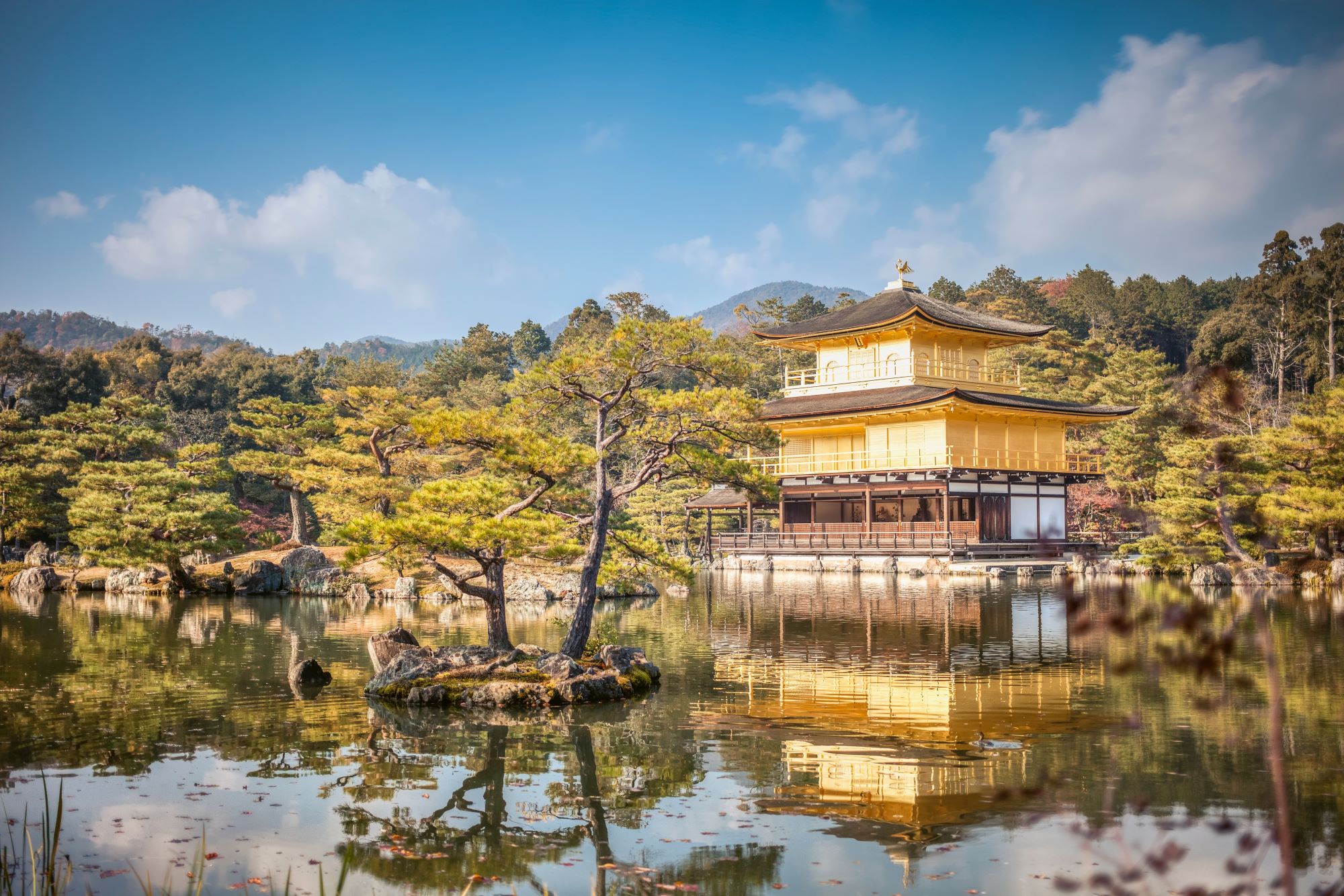
Trinità dei Monti and Piazza di Spagna - Night.
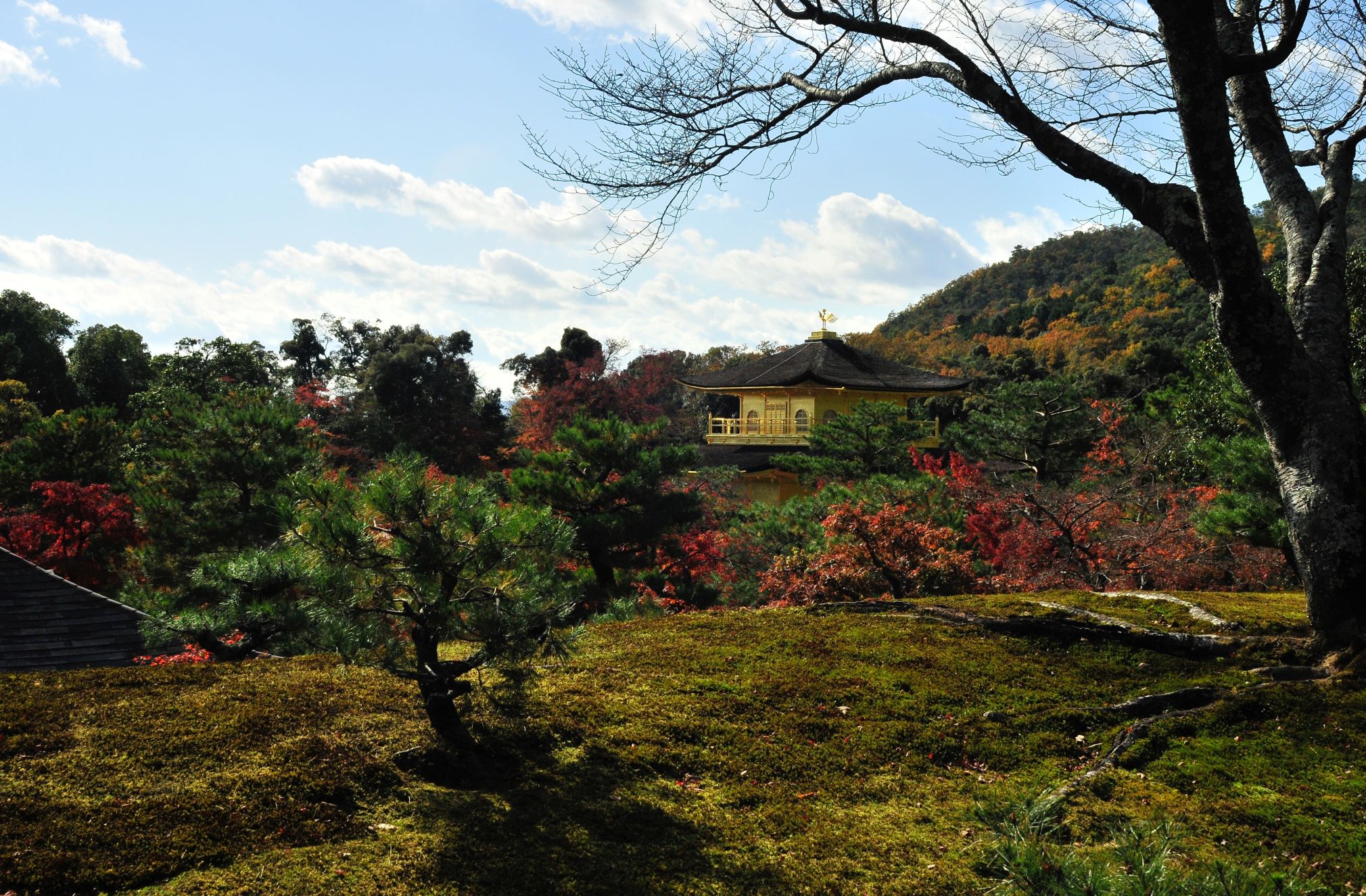
Trinità dei Monti and Piazza di Spagna - Morning.
4) Kinkaku-ji Temple (Golden Pavilion)
Built over a large pond in the 14th century as a retirement mansion for Shogun (military ruler) Ashikaga Yoshimitsu (but rebuilt in its original form more than once), it is now a Zen Buddhist temple. The Golden Pavillion is one of the most popular attractions in town and it takes its name from the gold leaf decorating the top two floors of the building. The gold leaf is said to fight the negativity associated with death. Visit the traditional Sekkatei teahouse.


5) Kiyomizu-dera
A UNESCO World Heritage site in Eastern Kyoto, the Kiyomizu-dera Temple overlooks the city from the Otowa Mountain. Built in 790 A. D., this picturesque temple is dedicated to the 11-headed Buddhist goddess of Mercy.
Try to visit this place before 8 A.M. to beat the crowds. Walk along the Tea-pot lane and visit its small craft stores. Don’t miss the large terrace of the Main Hall to enjoy amazing views of the city, especially during Fall foliage season. Built on 30-meter-high (98 feet) pillars, the terrace is used for ceremonies and dances.
Also visit: Rengeo-in Sanjusangendo
The Buddist temple Sanjusangendo is part of the Rengeo-in monastery and it is known for its big dimensions and its 1001 golden Buddha statues (plus 28 guardian statues). Listed as a National Treasure of Japan, its official name is Rengeo-in temple, meaning ‘Temple of the Lotus King Kannon-bosatsu’.

6) Higashiyama Jisho-ji
Also known as Ginkaku-ji or Temple of the Silver Pavillion. You can reach this temple, which is one of the most popular in town, by walking the Philosopher’s Path. Although it was never covered in silver leaf, it is a beautiful temple reflected in a pond with amazing gardens, including a moss garden and a white sand Zen garden.

7) Kyoto Imperial Palace
The original Kyoto Imperial Palace (Kyoto-gosho), built in AD 794 and replaced several times after being destroyed by fire, remains one of the city’s most visited historic sites. Although the present building was constructed in 1855, it still impresses.
Occupying a large (once-walled) enclosure near the heart of the city, highlights include its finely decorated gates and important rooms and buildings. These include the Hall for State Ceremonies (Shishinden), the Emperor’s Residence (Seiryo-den), the Courtroom (Ko-gosho), and the Imperial Library.
While the lovely grounds of this Kyoto landmark are open to the public, the palace itself can only be visited as part of a guided tour operated by the Imperial Household Agency. Be sure to plan ahead and check their website for reservations and application forms.

8) Nishiki Market
Perfect place to explore Kyoto’s food culture. Very crowded during lunchtime (it is better to visit it in the morning or right before closing, around 5 P.M.), this narrow shopping street offers all the traditional ingredients for Japanese cooking and a nice array of food samples and snacks.

9) Yasaka Shrine & cherry blossoms
Yasaka Shrine or Yasaka Jinja, also known as Gion Shrine, is one of the most popular shrines in Kyoto. Located between the Gion district and Higashiyama, it was built over 1350 years ago and it combines the inner sanctuary (honden) and the offering hall (haiden) in a single building. The lanterns in front of the dance stage get lit every evening and bear the names of local sponsors.
This shrine is very well known for the Gion Matsuri, a Summer festival celebrated in July, probably the most famous festival in Japan.
Yasaka Shrine is also crowded during the cherry blossom in early April, due to its proximity to the Maruyama Park, one of the best spots to admire cherry blossoms in Kyoto.

10) Nanzen-ji
Located next to Kyoto’s forested Higashiyama mountains, this large Zen temple is one of the most famous in Japan and it includes multiple sub-temples. In the 13th century, the Emperor Kameyama built his retirement mansion at the temple’s present location and then converted it into a Zen temple.

11) Geishas in the Gion District
Famous as an entertainment and geisha district, Gion is an area of Kyoto that is well suited to explore on foot. Located on the eastern bank of the Kamogawa River, Gion is an eclectic mix of modern architecture and historical beauty that provides a unique taste of numerous Japanese traditions, from the elaborately dressed geishas to well-preserved 17th-century restaurants and teahouses offering a glimpse of old Japan.
Centered on an area encompassing Hanami-Koji Street, Shijo-dori Street, and the waterside promenades of Shirakawa Minami-dori Street, Gion is also famous for its many fine temples. The best-known of these are the 15th-century Silver Pavilion (Ginkakuji) and the Chion-in Temple.
Chion-in is one of Japan’s most famous temples, notable for its 24-meter-high, two-story tower (Sammon-san), which houses the country’s largest bell. Weighing 71 tons, it was cast in 1633, and is rung only during festivals in mid-April. Gion is a wonderful (and safe) place to enjoy a walking tour at night, too.

12) Wagyu, sushi, okonomiyaki
If you are a meat lover, don’t miss the incredible – although expensive – Kobe beef. Also try the traditional Japanese teppanyaki savory pancakes called Okonomiyaki.
Restaurants we recommend for an awesome Japanese cuisine tasting: Naritaya for incredible sushi.
Michelin-starred Mizuki for very high quality food, steaks, sushi. If you want to indulge, try the exquisite Wagyu steaks.

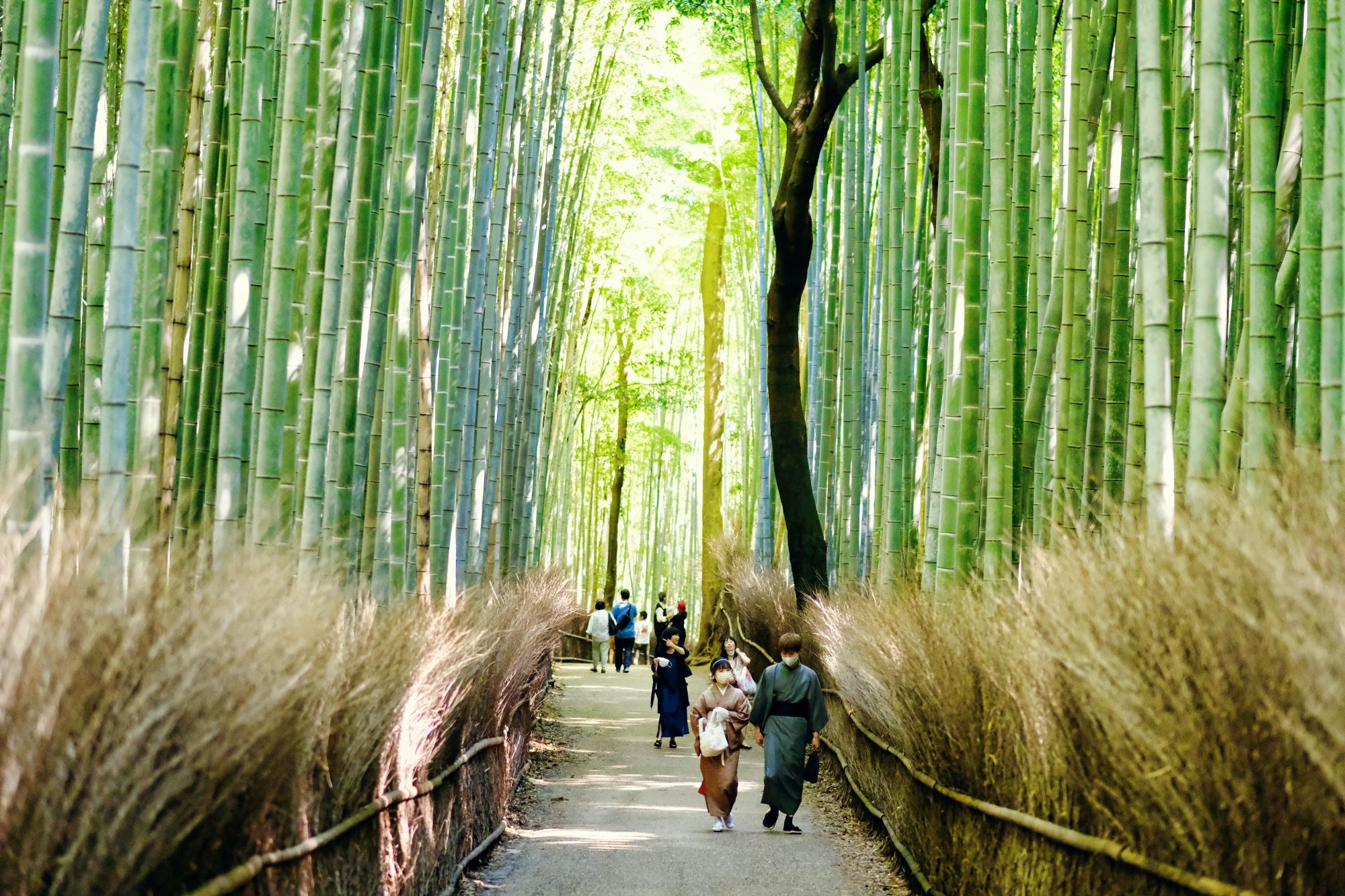
2) Arashiyama Bamboo Grove, Monkey Park Iwatayama
While in Arashiyama, no trip is complete without a walk through the magnificent Bamboo Grove. No experience is quite like this anywhere else in the world. Get lost among towering stalks of glowing green as you walk the paved path that winds its way through the sun-drenched bamboo forests. In some places, the bamboo is so thick that it’s impossible to see through to the other side.
Walking through the Arashiyama Bamboo Grove is like being transported into another world. But because the legend of its beauty has traveled far and wide, it’s a good idea to get here early, so you have the forest to yourself as much as possible.
Hike among wild monkeys and be a visitor of their home at the Iwatayama Monkey Park, located in Arashiyama and easily accessible by train. Make sure not to touch the monkeys and not to stare at them. In an enclosed area, you will have a chance to feed apple chunks to the monkeys.
“He who knows when he has enough is rich.” (Japanese proverb)
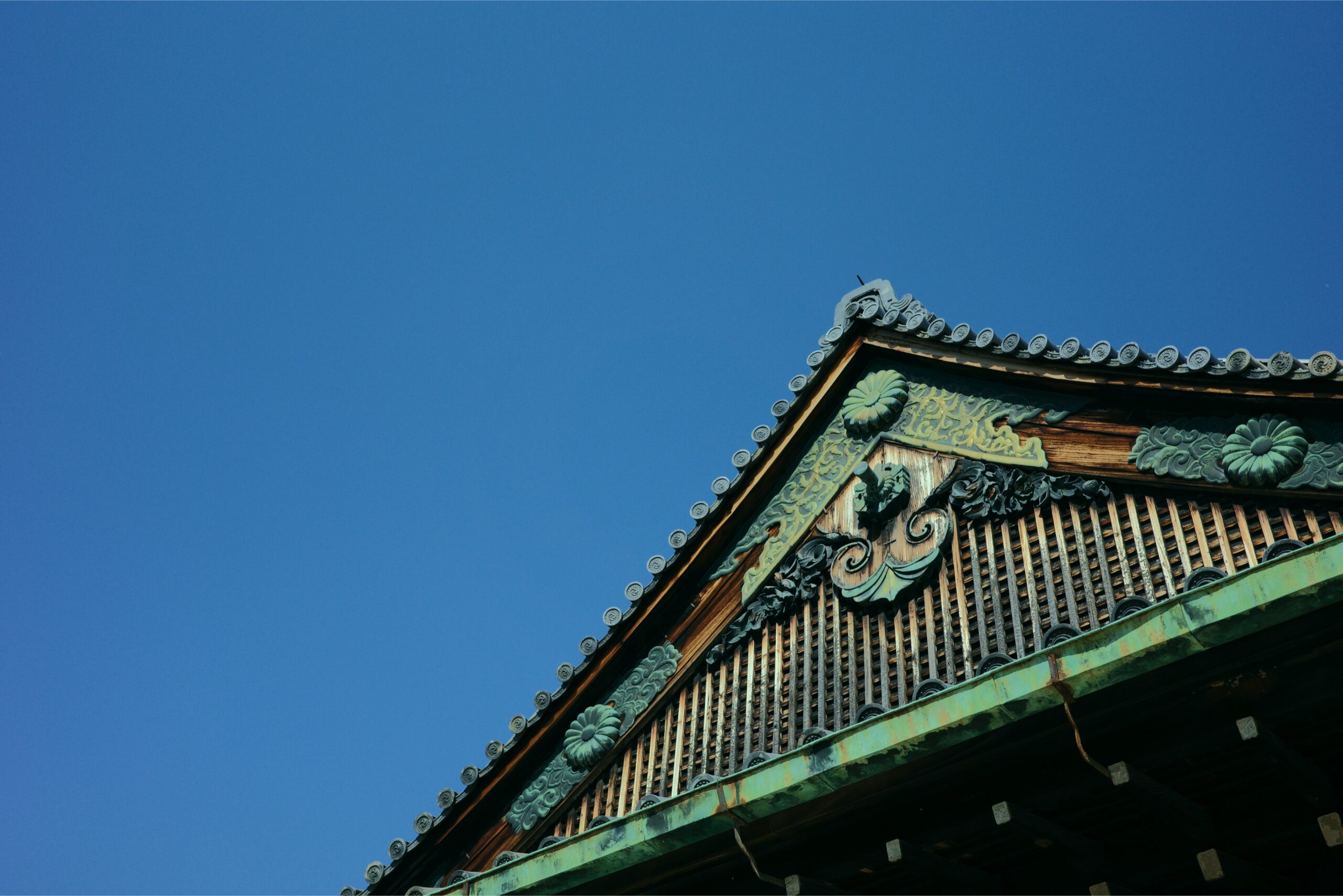
3) Nijō Castle
Built in 1603, this castle is made of several building and used to be the seat of government. It is also popular for being the location where the emperor abolished the once powerful Shogunate in the country. Admire the metal decorations and carvings of its main entrance, the East Gate (Higashi Otemon) and the Mikuruma. Take a walk in the beautiful gardens. Don’t miss the interiors of the main building, Ninomaru Palace, with its Hall of the Imperial Emissary.

Trinità dei Monti and Piazza di Spagna - Night.

Trinità dei Monti and Piazza di Spagna - Morning.
4) Kinkaku-ji Temple (Golden Pavilion)
Built over a large pond in the 14th century as a retirement mansion for Shogun (military ruler) Ashikaga Yoshimitsu (but rebuilt in its original form more than once), it is now a Zen Buddhist temple. The Golden Pavillion is one of the most popular attractions in town and it takes its name from the gold leaf decorating the top two floors of the building. The gold leaf is said to fight the negativity associated with death. Visit the traditional Sekkatei teahouse.


5) Kiyomizu-dera
A UNESCO World Heritage site in Eastern Kyoto, the Kiyomizu-dera Temple overlooks the city from the Otowa Mountain. Built in 790 A. D., this picturesque temple is dedicated to the 11-headed Buddhist goddess of Mercy.
Try to visit this place before 8 A.M. to beat the crowds. Walk along the Tea-pot lane and visit its small craft stores. Don’t miss the large terrace of the Main Hall to enjoy amazing views of the city, especially during Fall foliage season. Built on 30-meter-high (98 feet) pillars, the terrace is used for ceremonies and dances.
Also visit: Rengeo-in Sanjusangendo
The Buddist temple Sanjusangendo is part of the Rengeo-in monastery and it is known for its big dimensions and its 1001 golden Buddha statues (plus 28 guardian statues). Listed as a National Treasure of Japan, its official name is Rengeo-in temple, meaning ‘Temple of the Lotus King Kannon-bosatsu’.

6) Higashiyama Jisho-ji
Also known as Ginkaku-ji or Temple of the Silver Pavillion. You can reach this temple, which is one of the most popular in town, by walking the Philosopher’s Path. Although it was never covered in silver leaf, it is a beautiful temple reflected in a pond with amazing gardens, including a moss garden and a white sand Zen garden.

7) Kyoto Imperial Palace
The original Kyoto Imperial Palace (Kyoto-gosho), built in AD 794 and replaced several times after being destroyed by fire, remains one of the city’s most visited historic sites. Although the present building was constructed in 1855, it still impresses.
Occupying a large (once-walled) enclosure near the heart of the city, highlights include its finely decorated gates and important rooms and buildings. These include the Hall for State Ceremonies (Shishinden), the Emperor’s Residence (Seiryo-den), the Courtroom (Ko-gosho), and the Imperial Library.
While the lovely grounds of this Kyoto landmark are open to the public, the palace itself can only be visited as part of a guided tour operated by the Imperial Household Agency. Be sure to plan ahead and check their website for reservations and application forms.

8) Nishiki Market
Perfect place to explore Kyoto’s food culture. Very crowded during lunchtime (it is better to visit it in the morning or right before closing, around 5 P.M.), this narrow shopping street offers all the traditional ingredients for Japanese cooking and a nice array of food samples and snacks.

9) Yasaka Shrine & cherry blossoms
Yasaka Shrine or Yasaka Jinja, also known as Gion Shrine, is one of the most popular shrines in Kyoto. Located between the Gion district and Higashiyama, it was built over 1350 years ago and it combines the inner sanctuary (honden) and the offering hall (haiden) in a single building. The lanterns in front of the dance stage get lit every evening and bear the names of local sponsors.
This shrine is very well known for the Gion Matsuri, a Summer festival celebrated in July, probably the most famous festival in Japan.
Yasaka Shrine is also crowded during the cherry blossom in early April, due to its proximity to the Maruyama Park, one of the best spots to admire cherry blossoms in Kyoto.

10) Nanzen-ji
Located next to Kyoto’s forested Higashiyama mountains, this large Zen temple is one of the most famous in Japan and it includes multiple sub-temples. In the 13th century, the Emperor Kameyama built his retirement mansion at the temple’s present location and then converted it into a Zen temple.

11) Geishas in the Gion District
Famous as an entertainment and geisha district, Gion is an area of Kyoto that is well suited to explore on foot. Located on the eastern bank of the Kamogawa River, Gion is an eclectic mix of modern architecture and historical beauty that provides a unique taste of numerous Japanese traditions, from the elaborately dressed geishas to well-preserved 17th-century restaurants and teahouses offering a glimpse of old Japan.
Centered on an area encompassing Hanami-Koji Street, Shijo-dori Street, and the waterside promenades of Shirakawa Minami-dori Street, Gion is also famous for its many fine temples. The best-known of these are the 15th-century Silver Pavilion (Ginkakuji) and the Chion-in Temple.
Chion-in is one of Japan’s most famous temples, notable for its 24-meter-high, two-story tower (Sammon-san), which houses the country’s largest bell. Weighing 71 tons, it was cast in 1633, and is rung only during festivals in mid-April. Gion is a wonderful (and safe) place to enjoy a walking tour at night, too.

12) Wagyu, sushi, okonomiyaki
If you are a meat lover, don’t miss the incredible – although expensive – Kobe beef. Also try the traditional Japanese teppanyaki savory pancakes called Okonomiyaki.
Restaurants we recommend for an awesome Japanese cuisine tasting: Naritaya for incredible sushi.
Michelin-starred Mizuki for very high quality food, steaks, sushi. If you want to indulge, try the exquisite Wagyu steaks.

he ancient capital of Japan, Kyoto is a vibrant but very traditional city on the Honshu Island.
Known for its large number of fascinating Buddhist temples, imperial palaces, gardens, Kyoto has the magic power to bring you back in time. From the electricity wires in the streets to the Geishas, the atmosphere is purely impressive. One of the biggest cities in Japan, it is the only large town to have escaped the devastations of World War II, preserving the authenticity of its monuments and historic buildings. For over a thousand years, Kyoto was the residence of Emperors and Japan’s main cultural hub.
Often, people don’t speak English and aren’t able to read Western alphabet characters. It might be useful to always have a map to show cab drivers what your destination is.
Seventeen buildings in Kyoto are UNESCO World Heritage sites.
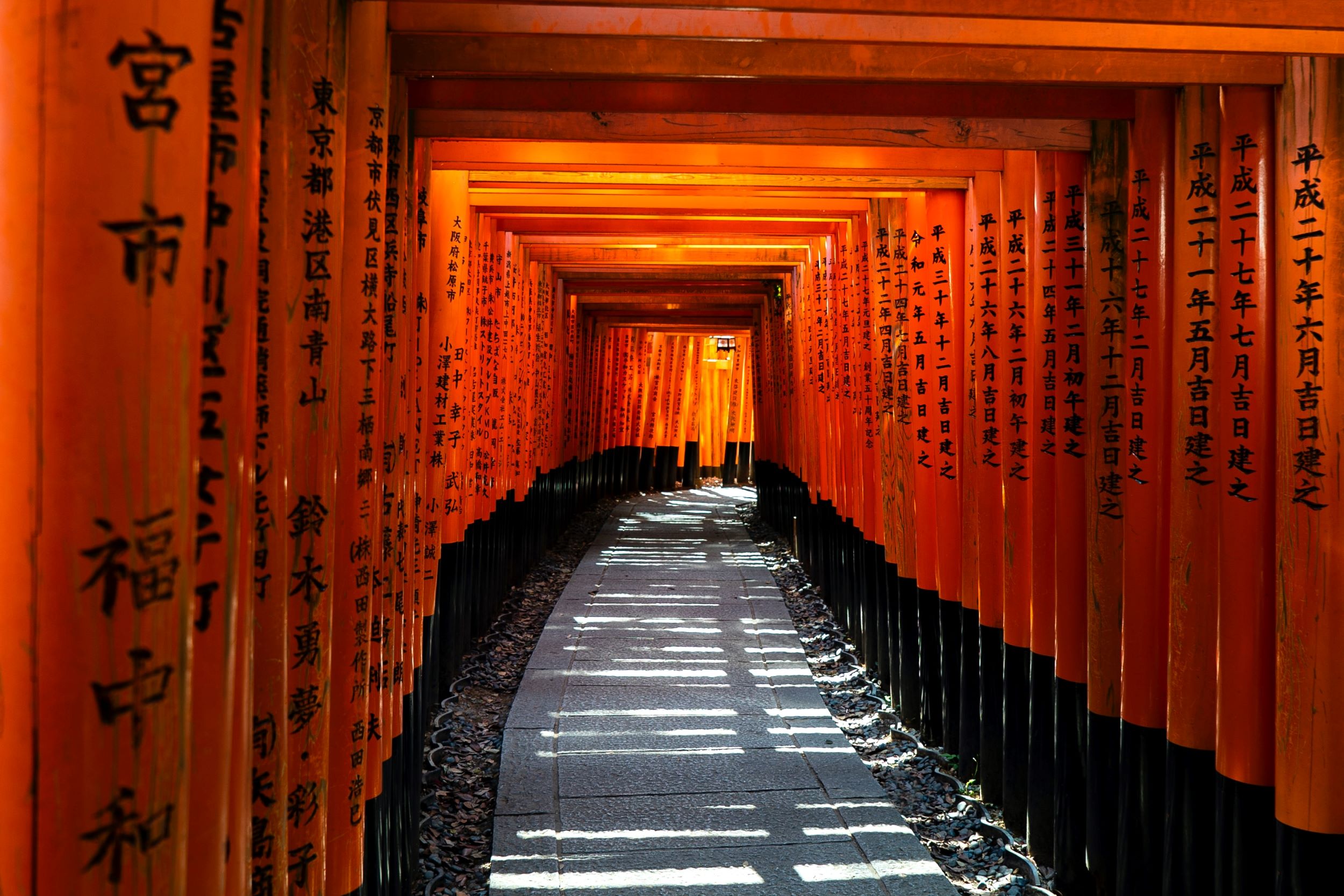
1) Fushimi Inari Taisha Senbon Torii (Thousands Torii Gate)
It’s one of the most famous shrines in Japan. Open 24 hours, you can visit it in the early morning or after 8 P.M. if you want to find smaller crowds. Built in 711 A.D., it is a must in Kyoto. Dedicated to Ukanomitama-no-mikoto, the goddess of rice-growing, it is a favorite site for merchants who ask for prosperity. It takes a couple hours to visit the incredible 4K (2,5 mile)-long avenue with 1000 orange and black torii (arches) and sculptures of foxes, considered as messengers of the gods.

2) Arashiyama Bamboo Grove, Monkey Park Iwatayama
While in Arashiyama, no trip is complete without a walk through the magnificent Bamboo Grove. No experience is quite like this anywhere else in the world. Get lost among towering stalks of glowing green as you walk the paved path that winds its way through the sun-drenched bamboo forests. In some places, the bamboo is so thick that it’s impossible to see through to the other side.
Walking through the Arashiyama Bamboo Grove is like being transported into another world. But because the legend of its beauty has traveled far and wide, it’s a good idea to get here early, so you have the forest to yourself as much as possible.
Hike among wild monkeys and be a visitor of their home at the Iwatayama Monkey Park, located in Arashiyama and easily accessible by train. Make sure not to touch the monkeys and not to stare at them. In an enclosed area, you will have a chance to feed apple chunks to the monkeys.
“He who knows when he has enough is rich.” (Japanese proverb)

3) Nijō Castle
Built in 1603, this castle is made of several building and used to be the seat of government. It is also popular for being the location where the emperor abolished the once powerful Shogunate in the country. Admire the metal decorations and carvings of its main entrance, the East Gate (Higashi Otemon) and the Mikuruma. Take a walk in the beautiful gardens. Don’t miss the interiors of the main building, Ninomaru Palace, with its Hall of the Imperial Emissary.

Trinità dei Monti and Piazza di Spagna - Night.

Trinità dei Monti and Piazza di Spagna - Morning.
4) Kinkaku-ji Temple (Golden Pavilion)
Built over a large pond in the 14th century as a retirement mansion for Shogun (military ruler) Ashikaga Yoshimitsu (but rebuilt in its original form more than once), it is now a Zen Buddhist temple. The Golden Pavillion is one of the most popular attractions in town and it takes its name from the gold leaf decorating the top two floors of the building. The gold leaf is said to fight the negativity associated with death. Visit the traditional Sekkatei teahouse.


5) Kiyomizu-dera
A UNESCO World Heritage site in Eastern Kyoto, the Kiyomizu-dera Temple overlooks the city from the Otowa Mountain. Built in 790 A. D., this picturesque temple is dedicated to the 11-headed Buddhist goddess of Mercy.
Try to visit this place before 8 A.M. to beat the crowds. Walk along the Tea-pot lane and visit its small craft stores. Don’t miss the large terrace of the Main Hall to enjoy amazing views of the city, especially during Fall foliage season. Built on 30-meter-high (98 feet) pillars, the terrace is used for ceremonies and dances.
Also visit: Rengeo-in Sanjusangendo
The Buddist temple Sanjusangendo is part of the Rengeo-in monastery and it is known for its big dimensions and its 1001 golden Buddha statues (plus 28 guardian statues). Listed as a National Treasure of Japan, its official name is Rengeo-in temple, meaning ‘Temple of the Lotus King Kannon-bosatsu’.

6) Higashiyama Jisho-ji
Also known as Ginkaku-ji or Temple of the Silver Pavillion. You can reach this temple, which is one of the most popular in town, by walking the Philosopher’s Path. Although it was never covered in silver leaf, it is a beautiful temple reflected in a pond with amazing gardens, including a moss garden and a white sand Zen garden.

7) Kyoto Imperial Palace
The original Kyoto Imperial Palace (Kyoto-gosho), built in AD 794 and replaced several times after being destroyed by fire, remains one of the city’s most visited historic sites. Although the present building was constructed in 1855, it still impresses.
Occupying a large (once-walled) enclosure near the heart of the city, highlights include its finely decorated gates and important rooms and buildings. These include the Hall for State Ceremonies (Shishinden), the Emperor’s Residence (Seiryo-den), the Courtroom (Ko-gosho), and the Imperial Library.
While the lovely grounds of this Kyoto landmark are open to the public, the palace itself can only be visited as part of a guided tour operated by the Imperial Household Agency. Be sure to plan ahead and check their website for reservations and application forms.

8) Nishiki Market
Perfect place to explore Kyoto’s food culture. Very crowded during lunchtime (it is better to visit it in the morning or right before closing, around 5 P.M.), this narrow shopping street offers all the traditional ingredients for Japanese cooking and a nice array of food samples and snacks.

9) Yasaka Shrine & cherry blossoms
Yasaka Shrine or Yasaka Jinja, also known as Gion Shrine, is one of the most popular shrines in Kyoto. Located between the Gion district and Higashiyama, it was built over 1350 years ago and it combines the inner sanctuary (honden) and the offering hall (haiden) in a single building. The lanterns in front of the dance stage get lit every evening and bear the names of local sponsors.
This shrine is very well known for the Gion Matsuri, a Summer festival celebrated in July, probably the most famous festival in Japan.
Yasaka Shrine is also crowded during the cherry blossom in early April, due to its proximity to the Maruyama Park, one of the best spots to admire cherry blossoms in Kyoto.

10) Nanzen-ji
Located next to Kyoto’s forested Higashiyama mountains, this large Zen temple is one of the most famous in Japan and it includes multiple sub-temples. In the 13th century, the Emperor Kameyama built his retirement mansion at the temple’s present location and then converted it into a Zen temple.

11) Geishas in the Gion District
Famous as an entertainment and geisha district, Gion is an area of Kyoto that is well suited to explore on foot. Located on the eastern bank of the Kamogawa River, Gion is an eclectic mix of modern architecture and historical beauty that provides a unique taste of numerous Japanese traditions, from the elaborately dressed geishas to well-preserved 17th-century restaurants and teahouses offering a glimpse of old Japan.
Centered on an area encompassing Hanami-Koji Street, Shijo-dori Street, and the waterside promenades of Shirakawa Minami-dori Street, Gion is also famous for its many fine temples. The best-known of these are the 15th-century Silver Pavilion (Ginkakuji) and the Chion-in Temple.
Chion-in is one of Japan’s most famous temples, notable for its 24-meter-high, two-story tower (Sammon-san), which houses the country’s largest bell. Weighing 71 tons, it was cast in 1633, and is rung only during festivals in mid-April. Gion is a wonderful (and safe) place to enjoy a walking tour at night, too.

12) Wagyu, sushi, okonomiyaki
If you are a meat lover, don’t miss the incredible – although expensive – Kobe beef. Also try the traditional Japanese teppanyaki savory pancakes called Okonomiyaki.
Restaurants we recommend for an awesome Japanese cuisine tasting: Naritaya for incredible sushi.
Michelin-starred Mizuki for very high quality food, steaks, sushi. If you want to indulge, try the exquisite Wagyu steaks.


